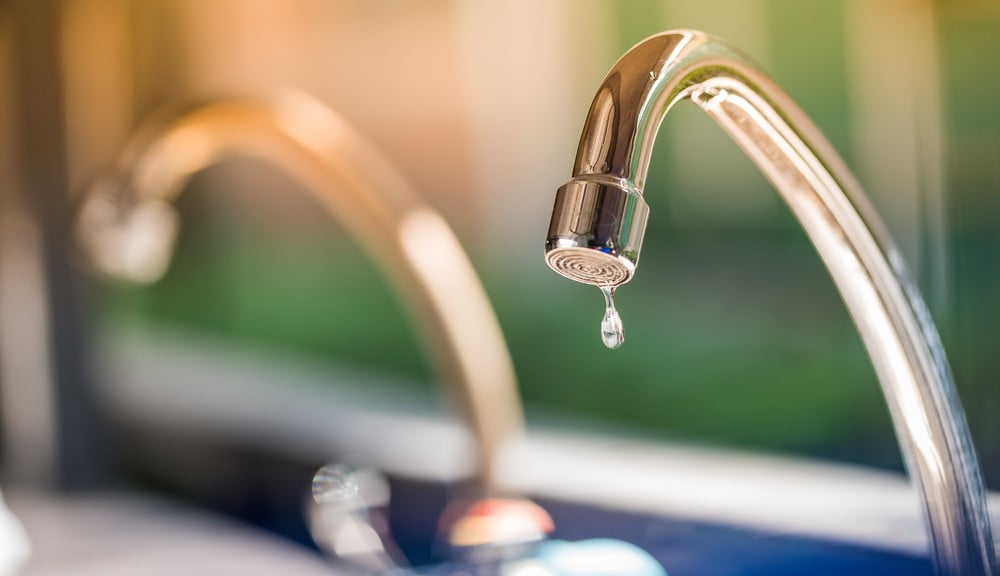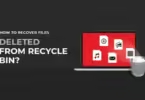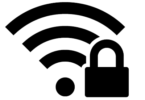Easy 100 Ways to Conserve Water When it comes to conserving water, small adjustments can have a big impact. Conserve water with ideas from our 100+ water-saving tips that you Conserving water can be done in various ways and it all starts with you.
Easy 100 Ways to Conserve Water

1. Rinsing your dishes with running water is a waste of water. It would be best if you fill one of your sinks or basin with wash water and the other with rinse water.
2. Avoid buying those old model refrigerators and air conditioners, for they tend to be high energy consuming. Make sure to buy today’s models that have energy conservation features.
3. Make sure your sprinklers are watering your lawn alone and not the entire house, pavements and even your village street.
4. Run your washing machine and dishwasher in full load. In this way, you can save up to 1,000 gallons of water a month.
5. Opt for shrubs and ground covers instead of turf for hard-to-water areas like steep slopes and isolated strips.
6. Install covers on pools and spas and check your pumps for leaks.
7. Use the garbage disposal carefully. You can compost vegetable food waste and save gallons.
8. Fall is the best season to plant. This is when weather conditions are cooler and rainfall is more often.
9. For cold drinks, keep a pitcher of water in the refrigerator instead of running the tap. This way, less water will be going down the drain.
10. Monitor your water bill for unusually high use. Unusual high usage is an indicator of leaks.
11. Water your lawn and garden in the morning or evening when temperatures are cooler to minimise evaporation.
12. Wash your fruits and vegetables in a pan of water instead of using running water.
13. Spreading a layer of organic mulch around plants retains moisture, saves water, and avoids the growth of weeds.
14. Use a broom instead of a hose to clean your driveway and sidewalk and save water every time.
15. Use water efficient shower heads.
16. Collect the water you use for rinsing fruits and vegetables for reuse to water your plants.
17. If water runs off your lawn easily, split your watering time into shorter periods to allow better absorption.
18. Check outdoor faucets, sprinklers and hoses for leaks.
19. If you have an automatic refilling device, check your pool for leaks regularly.
20. Check the root zone of your lawn or garden for moisture before watering using a spade or trowel. If it is still moist two inches under the soil surface, you still have enough water.
21. Opt for appliances that offer cycle and load size adjustments. They are more water and energy efficient.
22. Shorten your shower by a minute or two and save up to 150 gallons per month.
23. Upgrade older toilets with water efficient models.
24. Adjust your lawn mower to a higher setting. A taller lawn shades roots and holds soil moisture better.
25. When cleaning out fish tanks, reuse the nutrient-rich water to water your plants.
26. Use sprinklers for large areas of grass and water small patches by hand to avoid waste.
27. Check leaks on your toilet tanks by putting food color into the tank. If it seeps into the bowl without flushing, your toilet tank has a leak. Fixing it can save up to 1,000 gallons a month.
28. When taking a bath, plug the tub before turning the water on, and then adjust the temperature as the tub fills up.
29. Walkways and patios provide space that does not ever need to be watered. These useful “rooms” can also add value to your property.
30. Collect rainwater and use it to water your garden.
31. Designate one glass for your drinking water each day or refill a water bottle. This will cut down on the number of glasses to wash.
32. Install a rain sensor on your irrigation controller. This will automatically let you system to use rainwater when it is raining.
33. Do not use running water to thaw food. Defrost food in the refrigerator for water efficiency and food safety.
34. Use drip irrigation for shrubs and trees to apply water directly to the roots where it is most needed.
35. When doing the laundry, match the water level to the size of the load.
36. Teach your children to turn off faucets tightly after each use.
37. Remember to check your sprinkler system valves periodically for leaks and keep the sprinkler heads in good shape.
38. Soak pots and pans instead of letting the water run while you scrape them clean.
39. Do not water your lawn on windy days when most of the water blows away or evaporates.
40. Water your plants deeply but less frequently to encourage deep root growth and drought tolerance.
41. Know where your master water shut-off valve is located. This could save water and prevent damage to your home.
42. To decrease water wastage on sloping lawns, apply water for five minutes and then repeat two to three times.
42. Group plants with the same watering needs together to avoid over watering some while under watering others.
43. Use a minimum amount of organic or slow release fertilizer to promote a healthy and drought tolerant landscape.
44. Trickling or cascading fountains lose less water to evaporation than those spraying water into the air.
45. Use a commercial car wash that allows you to recycle water.
46. Avoid recreational water toys that require a constant flow of water.
47. Turn off tap water while brushing your teeth and save 25 gallons a month.
48. Use a rain gauge, or empty tuna can, to track rainfall on your lawn. Then reduce the frequency of watering your lawn.
49. Encourage your school system and local government to develop and promote water conservation among children and adults.
50. Learn how to shut off your automatic watering system in case of malfunctions or water will be wasted.
51. Set a timer when watering your lawn or garden to remind you when to stop. A running hose can discharge up to 10 gallons a minute.
52. Replace your toilet flush flapper when it malfunctions.
53. Make it a habit to install water-saving aerators on all of your faucets.
54. Opt to plant low water maintenance flowers or shrubs to save on water.
55. Install an instant water heater near your kitchen sink so you do not have to run the water while it heats up. This will also reduce energy costs.
56. Use a grease pencil to mark the water level of your pool at the skimmer. Check the mark 24 hours later to see if you have a leak.
57. If your dishwasher is new, cut back on rinsing. Newer models clean more thoroughly than older ones.
58. If installing a lawn, select a turf mix or blend that matches your climate and site conditions.
59. When the kids want to cool off, use the sprinkler in an area where your lawn needs it the most. This will cool off your kids and waters your lawn at the same time.
60. Make sure your swimming pools, fountains, and ponds are equipped with re-circulating pumps.
61. Bathe your kids together.
62. Consult with your local garden nursery for information on plant selection and placement for optimum outdoor water savings.
63. Use those winterise outdoor spigots when temperatures dip below freezing to prevent pipes from leaking or bursting.
64. Insulate hot water pipes for more immediate hot water at the faucet and for energy savings.
65. Wash your car on the lawn, to water your lawn at the same time.
66. Drop your tissue in the trash instead of flushing it and save water every time.
67. Direct your rainwater collector to your plants to minimise the use of your tap water in watering your plants.
68. Support projects that use reclaimed wastewater for irrigation and industrial uses.
69. Use a hose nozzle or turn off the water while you wash your car. You will save up to 100 gallons every time.
70. Share water conservation tips with family, friends and neighbours.
71. Setting cooling systems and water softeners for a minimum number of refills saves both water and chemicals, plus more on utility bills.
72. Washing dark clothes in cold-water saves both water and energy while it helps your clothes to keep their colours.
73. Leave lower branches on trees and shrubs and allow leaf litter to accumulate on the soil. This keeps the soil cooler and reduces evaporation.
74. Report broken pipes, open hydrants and errant sprinklers to the property owner or your water provider, so proper action can be immediately done.
75. Let your lawn go dormant during the summer. Dormant grass only needs to be watered every three weeks or less if it rains.
76. Add compost to your plants to add water-holding and nutrient-rich organic matter to the soil.
77. Use sprinklers that deliver big drops of water close to the ground. Smaller water drops and mist often evaporate before they hit the ground.
78. Water your plants only when necessary. More plants die from over-watering than from under-watering.
79. One more way to get eight glasses of water a day is to re-use the water left over from cooked or steamed foods to start a scrumptious and nutritious soup.
80. Adjust your watering schedule each month to match seasonal weather conditions and landscape requirements.
81. Turn off the water while you wash your hair to save up to 150 gallons a month.
82. Wash your pets outdoors in an area of your lawn that needs water. Like washing your car and letting your kids cool down on the lawn, this will help water your lawn while you wash your pets.
83. When shopping for a new clothes washer, compare resource savings among Energy Star models. Some of these can save up to 20 gallons per load, and energy too.
84. Apply water only as fast as the soil can absorb it.
85. Aerate your lawn at least once a year so water can reach the roots rather than run off the surface.
86. When washing dishes by hand, avoid the use of running water while scrubbing them. Instead, turn the tap off or fill the sink or basing with water for rinsing.
87. Catch water in an empty tuna can to measure sprinkler output. One inch of water on one square foot of grass equals two-third gallon of water.
88. Turn off the tap or shower while you shave and save up to 300 gallons a month.
89. When you give your pet fresh water, do not throw the old water down the drain. Use it to water your trees or shrubs.
90. If you accidentally drop ice cubes when filling your glass from the freezer, do not throw them in the sink. Drop them to your plants instead.
91. To save water and time, consider washing your face or brushing your teeth while in the shower.
92. While staying in a hotel or even at home, consider reusing your towels.
93. When back flushing your pool, consider using the water on your landscaping.
94. For hanging baskets, planters and pots, place ice cubes under the moss or dirt to give your plants a cool drink of water and help eliminate water overflow.
95. Throw trimmings and peelings from fruits and vegetables into your yard compost to prevent using the garbage disposal, keep your yard moist and minimise watering intervals.
96. When you have ice left in your cup from a take-out restaurant, do not throw it in the trash. Dump it on a plant instead.
97. Have your plumber re-route your gray water to trees and gardens rather than letting it run into the sewer line. Check with your city codes, and if it is not allowed in your area, start a movement to get that changed.
98. Keep a bucket in the shower to catch water as it warms up or runs. Use this water to flush your toilet or water your plants.
99. When you are washing your hands, do not let the water run while you lather.







Leave a Comment
You must be logged in to post a comment.